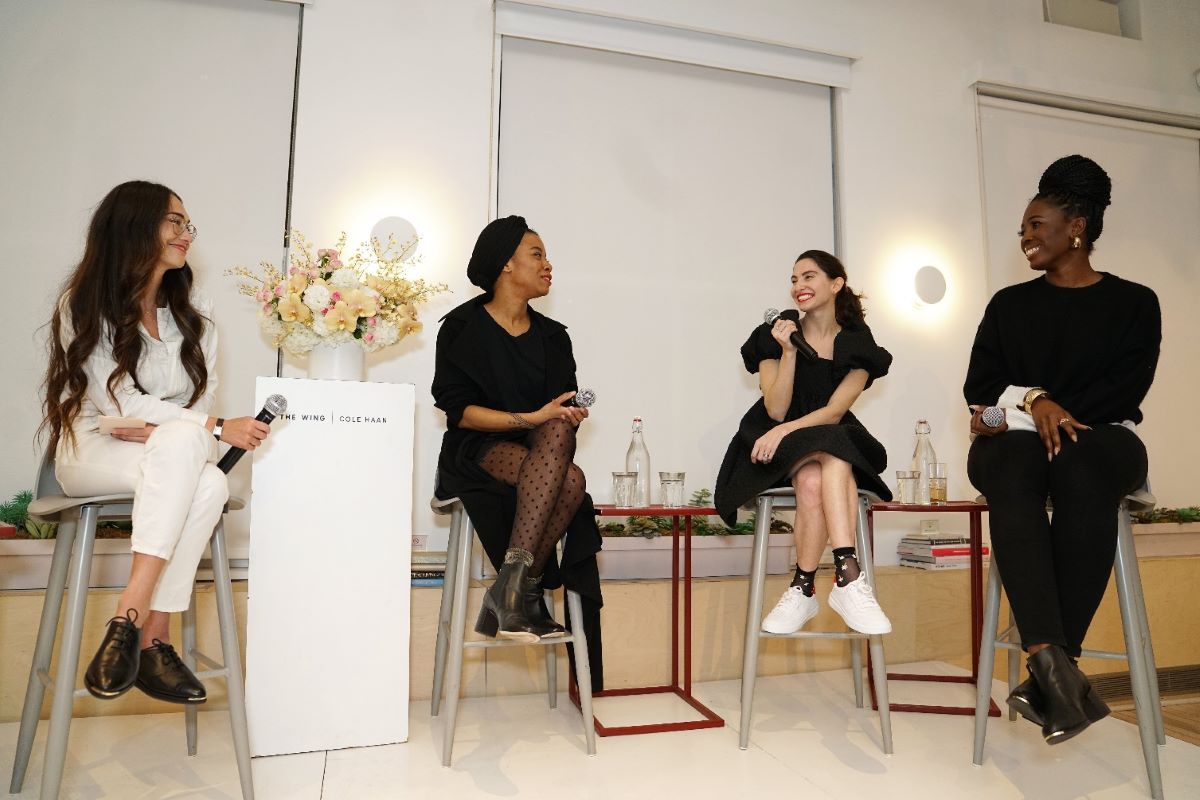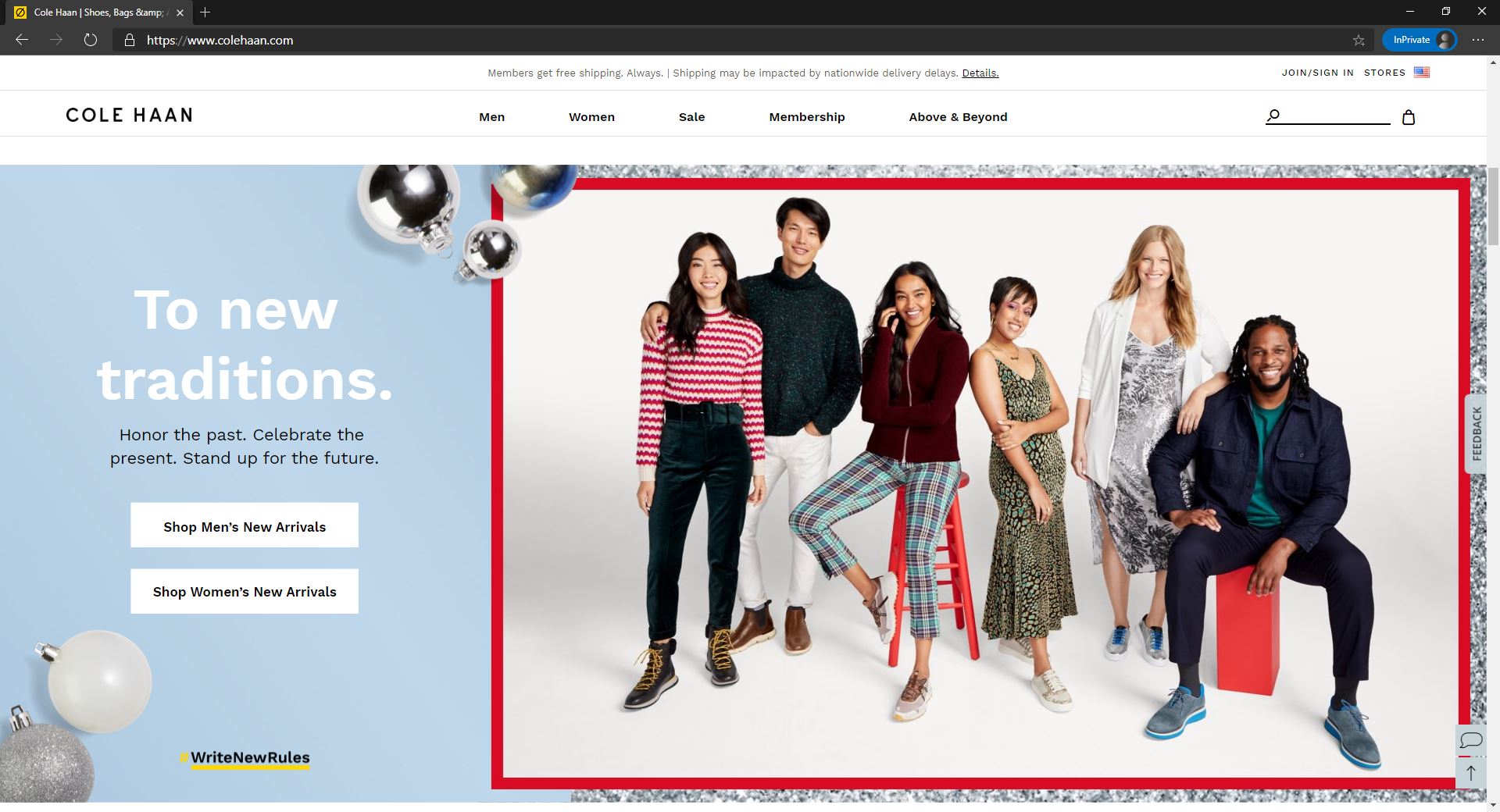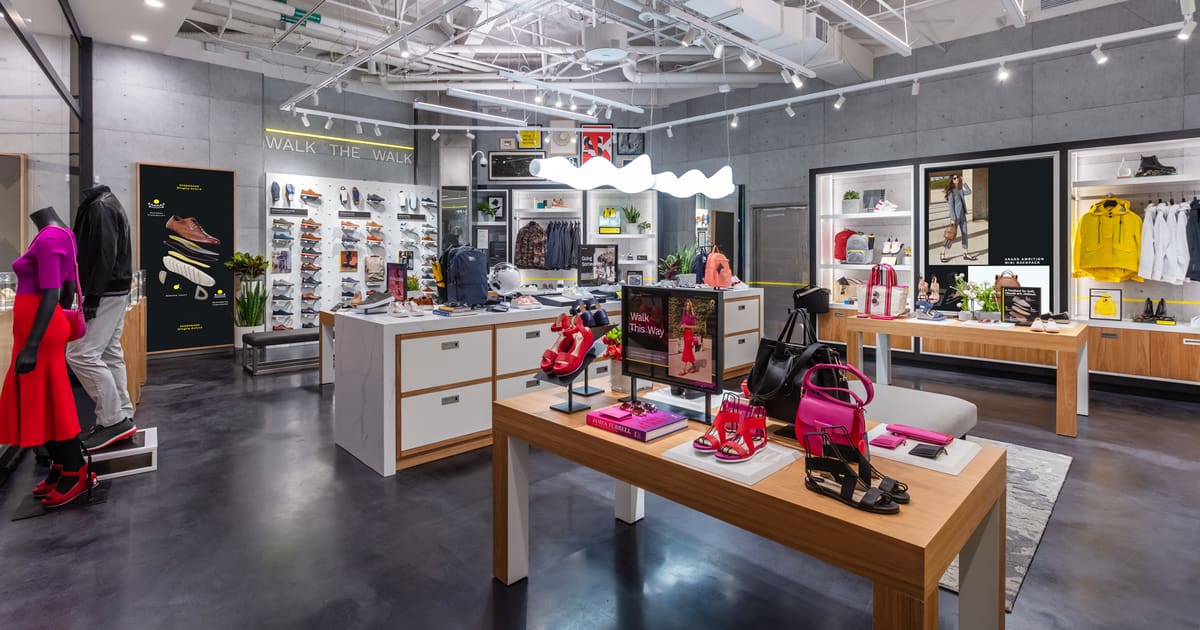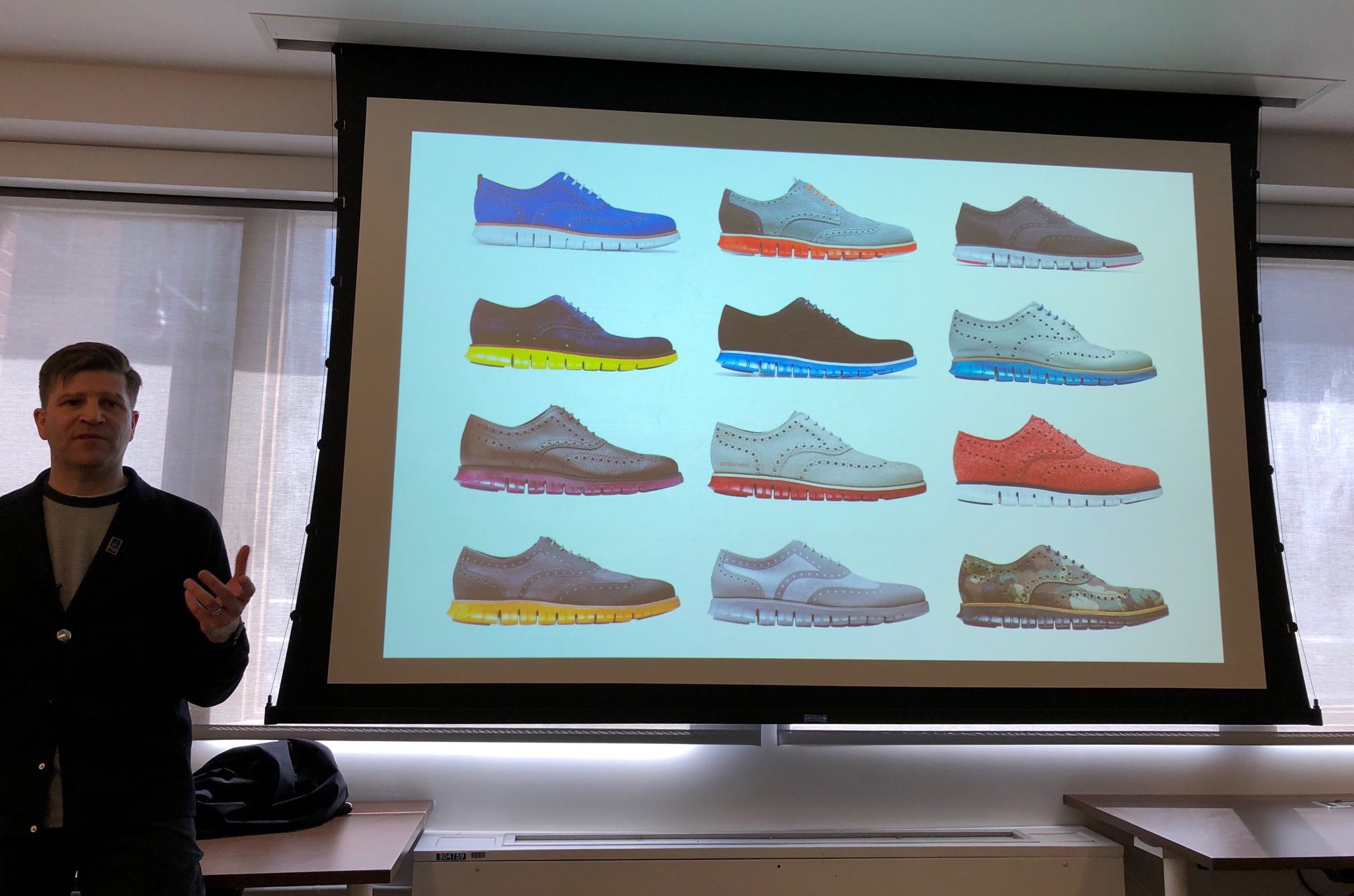How Cole Haan makes a Breakthrough to a Premium Brand for Entrepreneurs
In 1929, two craftsmen Trafton Cole and Eddie Haan founded a footwear brand called Cole Haan and a lot has changed since then. Originally based in Chicago as a specialist in men’s formal footwear, today the label is famous for its easy-to-wear styles that can go from workout to commute to desk. Sports-wear giant Nike bought Cole Haan in 1988 and sold it to UK private equity firm Apax Partners in 2012.
Cole Haan says its gear is intended to perform from “work to work-out to weekend,” targeting a core customer of men and women between the ages of 24 and 44. Cole Haan’s shoes priced around $60 to $400, with most items priced between $100 and $200.
The brand has successfully avoided its competitors’ troubles by embracing e-commerce and revamping its products to target millennials and women. Earlier last year it raised $290 million in a term-loan offering that was oversubscribed by investors.
“Cole Haan has become a success story,” said Raya Sokolyanska, a senior analyst at Moody’s Investors Service, adding the company “was able to reinvent itself by getting two things right: product and digital.”
Cole Haan’s Digital Race and Marketing Campaign
Since 2018, David Maddocks Cole Haan’s Chief Marketing Officer and General Manager has announced on a Cheddar interview as mobile had taken over 70% of the brand sales traffic, it will start bringing the business online or as David said, “heavily investing in all things digital, in term of advertising”. The brand is aiming at young and digital audience, with a determination that mobile is a step further to integrate and personalize customer experiences, or even beyond it.

“At a time when more than a third of our sales come from online channels and half of those sales come from mobile, we had to rethink our strategy,” Maddocks said, “It was important for us to reach our consumers where they already are.”
Along with e-commerce strategy, Cool Haan is famous for its customer-focused storytelling, which has made up an important part of the brand’s marketing strategy. Even when customers are not really looking to buy any new shoes, Cole Haan’s tackles with its branded content to engages them on social media, email, video and online.
Recently, with its captivating series Change Makers, Cole Haan has collaborated with agency Giant Spoon and the Forbes Content Studio to spotlight young trailblazers who is changing the world. With stories, Cole Haan is digging deeper and showcasing the brand’s messages as well as values, instead of plainly tell people what to wear. The commitment to creative storytelling would touch Cole Haan’s audience, in time when shoppers are more open to try new experiences, strong storytelling has the power to not only capture but also keep their attention.
How about Ads on Podcasts and Streaming Services?
As Cole Haan target on youngsters, affluent workers, who practically live online, so it made sense for the brand to meet them there. That is why most of its media campaign are focus on content integrations with newsletter and podcast which bring an empowerment-oriented tone and sometimes female cult-followings. The brand might be a century year old, yet the constant effort is always there to rejuvenate Cole Haan’s spirit to grow younger and more inspiring every day.
When venturing into podcast ads for the first time, Cole Haan has come up with many impressive one including Two Dope Queen, Note to Self, Death Sex & Money. It is also partnering with podcasting giant Gimlet Media, along with involving many top podcasters to promote the campaign like Startup’s Lisa Chow, ELT’s Flora Lictman. Especially, Gimlet also created a custom landing page which will link back to Cole Haan’s homepage, and drive traffic to landing page through paid social promotion.

Besides, Cole Haan is also tackling across its social properties as well as live-streaming entertainment platforms such as Hulu and YouTube. “We’ve been highly digitally oriented for the past few years, this is just the biggest amplification,” said Maddocks.
Hashtag Campaign to Create Engagement and Drive Best Traffic
Look at the latest wave from Cole Haan – a campaign introducing its latest Zerogrand collection urges people to #WriteNewRules, as a message which its Chief Marketing Maddocks claims “We’ve always appealed to people who are entrepreneurial and looking for new ways to approach things. They are writing new rules for business, innovation, and technology. We wanted to celebrate that and give voice to those new rules.”
Hashtags have come a long way since 2007 when Chris Messina invented them as a way to improve the Twitter communication experience. Now hashtags are all over on the Web, and even elsewhere, like in magazines, commercials, and TV shows.
Without being costly, the campaign relied mainly on the outburst of the hashtag on Twitter and Instagram to get the word out about these unique projections around the city. Once the hashtag started to catch on, Cole Haan has successfully hit its four-pillar marketing strategy, which targets entrepreneurs in business, wellness, and pro-social entrepreneurs, and then cultural audiences, including artists and fashion. “The goal of the company has been to disrupt the dress footwear world from the inside out,” says Maddocks.
Cole Haan: Fashion Retailer Talks on Tech Adaption
After leading marketing efforts for Converse, and then serving as an adviser for brands like IBM, Jockey International and Keds, David Maddocks was appointed CMO and general manager of business development at Cole Haan in 2013.
While Maddocks takes over all angles of Cole Haan’s store-design, creative collaborations as well as licensing, marketing, and brand strategy. Obviously, he bought Cole Haan its own domain. For a reason that domains are channels or “doorways” into a company or brand that allow people discreet entry points.
Dot(.)com is the umbrella, such as NBC who is offering news, entertainment, and sports on one general channel. Then someone came up with the idea that you could have multiple channels and a much broader experience and can enjoy longer engagement period as well, so more channels came into being. And the exact practice would happen for brands online: dot(.)biz for investors, dot(.)com for commerce, dot(.)green for sustainability, etc.
However, there are always two sides of the matter, so what are the challenges companies might face with a list of brand domains? Maddocks shared “It’s a matter of customer engagement and choice.” We are in the big world of data which give us intimate knowledge of our customer and allows for endless segmentation. The retail world used to think of “doors” meaning the number of stores in which we sell products. Now “doors” means households. Where the customer journey ends up is going to be just as important as where it begins.
In brief, Maddocks advices CMOs when it comes to managing their brand at a domain level, is that when thinking about the engagement funnel or landing folks to a single spot – remember there are domains which helps open up several engagement funnels, each with their own opportunities and challenges.
How Cole Haan Has Adapted Micro-Services for Its Tech In-house?

Cole Haan did have it tough time back in 2017, however, as if present the brand is regained its growth. Now it is in the midst of going public and its tech is getting a refresh. Cole Haan re-platformed its e-commerce site, redeployed a management system for digital, and redid its warehouse during the busiest shopping season of the year.
And as the company is in “capitalization phase,” they have to say bye to vendor technologies and instead make the most advantage out of the in-house team, plus the help of others micro-services.
When it comes to micro-services, “The first thing you think about is integrating a bunch of different disparate technologies,” said Michael Hines, VP of direct-to-consumer platforms at Cole Haan, talks at the National Retail Federation conference earlier this year. With a small developer team for Cole Haan’s e-commerce functions, micro-services enabled the retailer to build its technology.
As Hines does not want to overlap or overspend on existing partners whose capabilities they might want to pocket for later, he has to evaluate potential vendor thoroughly, with a range of mandatory questions include: Do they have micro-services? Are there layers available to us? How robust is it? What capabilities can we do, what we will not be able to?
Two Major Vendors and the Tools Cole Haan Is Using
| Tech Partners | For the purpose of … |
| Aptos – Enterprise Oder Management | – Technologies innovations for mobile commerce, pop-up shops, localized assortments. – Retail specialist provides wide range of solutions |
| Slack | – Streaming workflows make efficient interaction – Quick syncs and status updates help cut down on-time consuming meetings. – Real time conversation – Central hub to utilize information. |
How Cole Haan Grow Brand Loyalty through Product Innovation?
“For us, for several years, many of the relationships we had were akin to one-night stands. The customer only comes to us every nine months to find a pair of shoes,” Dave Maddocks, CMO and GM of business development at Cole Haan, told on the Advertising Week New York. “Contrast that with our top 10% of customers, they make up 50% of our revenue. So, we have got an incredibly loyal group of people, and then [people] where it’s transaction and then move on.”

Throughout the talk on how creative and experiences drive brand loyalty, Cole Haan emphasized the value of constant product innovation as a means of not only netting new customers, but also convincing these already loyal ones to double down on their commitment to a brand.
After being acquired by Apax Partners, Cole Haan has since shifted away from formal footwear to match a consumer trend toward business casual and athletic wear. Earlier helped to Nike’s line, MO Maddocks said. “Certainly, in the world of product we had moved down into that next large group, which of course, is millennials.”
Apax Partners in some ways bought Cole Haan at an opportune time, however, amid the emergence of e-commerce and the rising popularity of shoe-specific online shops like Zappos, which Amazon owns. More recently, Cole Haan has been able to tap into data insights from its own website to gauge where its next markets and areas of innovation should be.
“Fully 18% of our site traffic now is below the age of 24, so we’re going to have to chase into product there,” Maddocks said.
In view of product innovation, Cole Haan seen it as having a direct connection to brand loyalty which could be carried out through services such as membership programs – an important are the brand is trying to deploy best practice. Maddocks said. “Membership is going to look a lot like services and value-added experiences versus points for us, so the relationship that we facilitate through digital ends up coming back to our store associates and the experiences that you have in store.”
Nonstop changing for the best experiences, Maddocks hopes the brand can step past those once-every-nine-month shoppers – the “one-night stand” purchases – to foster a deeper connection and loyalty that will bolster future performance.
Insights on Cole Haan’s Innovative Lab
Since 2015, Cole Haan has thrived from its original form as a purveyor of classic New England dress shoes into a brand known for pushing the boundaries of footwear. Every year, it releases new collections as part of the “Grand” line that meet a set of criteria that includes excellent cushioning, breathability, durability, and lightness, such as ZeroGrand, Progrand or Originalgrand. However, the company still holds on to its 89-year heritage by focusing on craftsmanship and high-quality materials.

While tackling the brand innovation center, we meet Scott Patt – one of the masterminds of the lab or the company’s Vice President of Design and Innovation, whose background involved Armani, Nike, and Converse. Two years ago, Patt came up with a procedure here at the lab. He believes to maintain some degree of discipline in the midst of creativity is the key to making the innovation center as effective as possible.
“Many innovation centers are just a bunch of brilliant people, huddled in a corner, coming up with random ideas,” he says. “I just don’t think that’s the best use of talent. I would rather have my team focused on solving specific problems. Within those guardrails they can go crazy, but you need to have method in the madness.”
Human-centered Innovation to Push Boundaries
The center’s process all begins by surveying their typical customer’s lifestyle. Which means thinking about their routine over the course of a day, a week or even a year. Where could be from the gym to work, to dinner, from the office to weekend hikes. The team studies the pain point throughout this experience, such as the need to switch from dress shoes into sneakers on the commute by foot to an office, or the exact parts of a woman’s foot that hurt after 12 hours in four-inch heels, or the discomfort of wearing heavy winter boots to deal with the elements.
And that is how the brand comes up with the idea for a line of shoes that are Oxfords on the top, but sneakers on the bottom. On first glance, this may seem like a silly idea that goes against the rules of fashion. But over the time of repeating and twisting prototypes, Cole Haan birthed a hybrid shoe that has become very popular.
However, the trick is whether the innovation team know how to balance between bringing new products to market versus the feeling that there is still more left to be done. With that sense, you would have a clear set of goals from the beginning, so that employees can tick off what they were able to accomplish in each round.
The Bottom Lines
Been on the game since 1982, Cole Haan is an old oak who has lived through many difficulties and on the rise to ace the footwear domain once again. The company has made constant efforts both internal at its design center and external at its marketing strategy to drive the company beyond an American brand.
Aging but do not bearing an old spirit, Cole Haan while aiming at millennials, realized that this generation is a super active one, and to last in such vibrant system it has to be as lively as well. So, innovate-driven and customer-centric are the two keywords that the brand is trying not miss.









